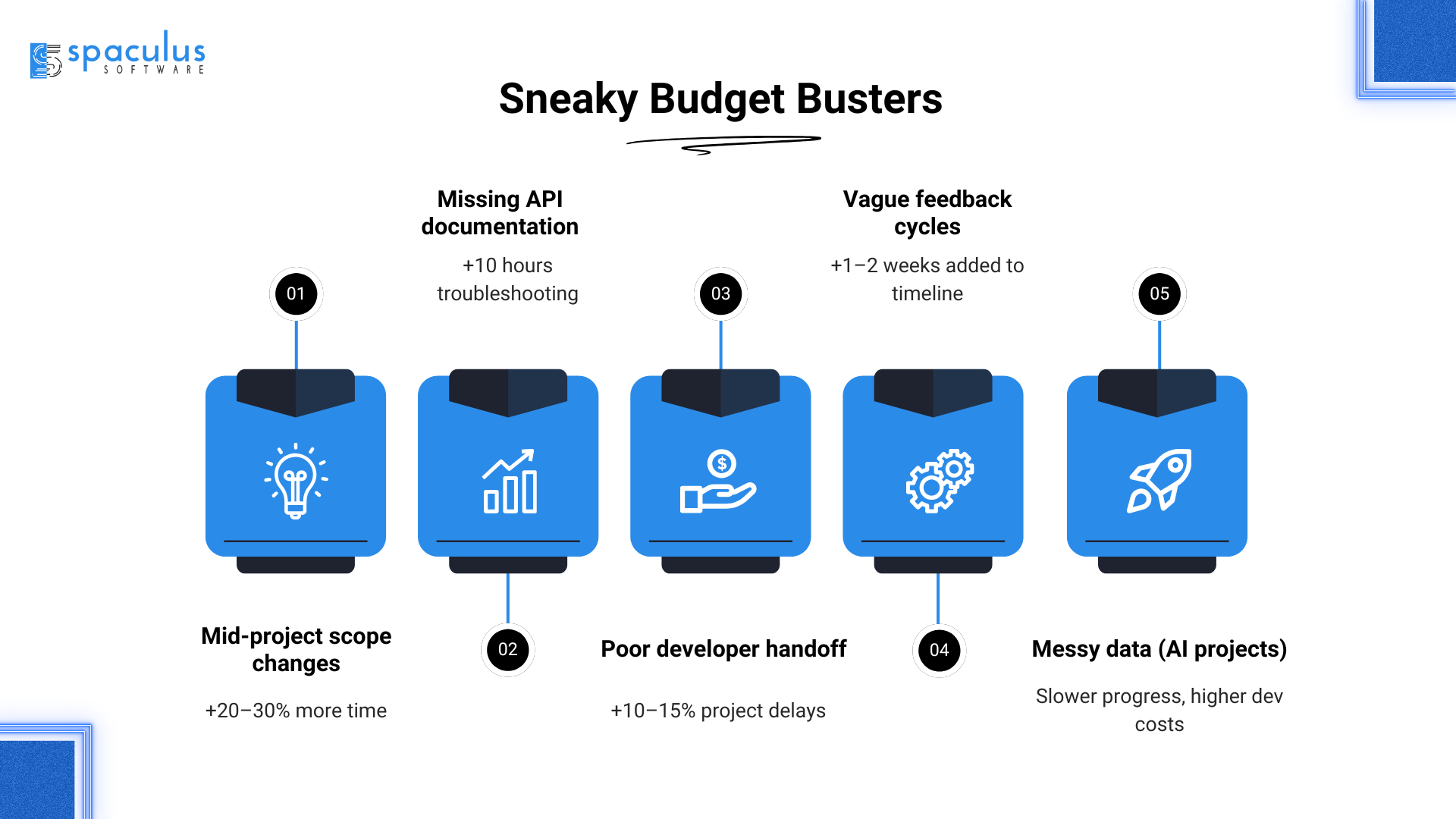
Hiring an offshore Python developer in 2025 is easier than ever but budgeting still confuses most businesses.
Some clients think $2K can get them a full product.
Others assume $10K isn’t enough for anything useful.
And both are often wrong.
What you can actually get with different budgets. No fluff. Just straight answers, examples, and pricing ranges that actually help you plan.
Let’s break it down.
Python is one of the most in-demand languages globally — powering web apps, AI tools, data dashboards, SaaS platforms, and automation systems.
And offshore teams bring key benefits:
But without proper budgeting, even a good team can underdeliver. That’s why planning by budget size and project type is critical.
Before diving into budget tiers, let’s look at real-world hourly rates.
| Region | Average Hourly Rate (USD) |
| India | $20 – $40 |
| Eastern Europe | $30 – $60 |
| Latin America | $25 – $50 |
| Africa | $20 – $35 |
| Philippines/Vietnam | $22 – $45 |
This is why offshore budgeting isn’t just about money — it’s about using money wisely depending on region and skill level.
Let’s say your total budget is $2,000. What’s realistically possible?
At a $25/hour rate (common in India), you get around 80 hours of work.
That’s good for:
Here’s a real breakdown:
| Project Type | Estimated Hours | Cost (USD) |
| Web scraper for 1 site | 30–40 hrs | $1,000 |
| Python API integration | 20–30 hrs | $750 |
| Dashboard from Excel data | 40–50 hrs | $1,500–2,000 |
| Basic automation tool | 50–60 hrs | $2,000 |
“ $2K is best for one simple deliverable. No login systems. No multi-user logic. Just a tool that works. “
At a $30/hour average, $5K gives you roughly 160–180 hours.
This budget fits mid-sized applications like:
Here’s how you might allocate that:
| Task | Hours | Budget Slice |
| Python backend logic | 60–70 | $2,100 |
| UI/UX development | 30 | $900 |
| Testing + bug fixing | 20 | $600 |
| Setup + deployment | 20 | $600 |
| Project management | 20 | $800 |
| Total | 160+ | $5,000 |
Quick insight :
With $5K, you can finish a complete working prototype — but keep your scope focused. One goal, not five.

Now we’re talking about 300–350 hours, depending on the region.
That opens the door to more complex projects:
Example breakdown:
| Feature Block | Estimated Hours | Budget |
| Backend with business logic | 120–140 hrs | $4,200–4,800 |
| Frontend (React/HTML) | 50–70 hrs | $1,800 |
| Auth, sessions, users | 30–40 hrs | $1,200 |
| LLM/Python ML integration | 40–60 hrs | $1,600 |
| QA, deployment, PM | 40–50 hrs | $1,400 |
| Total | 300–350 hrs | $10,000 |
Quick insight :
$10K lets you launch something real — usable, extendable, and ready to demo or pilot.
Even when you budget well, costs can increase if:
Here’s how these affect timeline and cost:
| Issue | Impact on Budget |
| Mid-project scope changes | +20–30% time |
| Missing API docs | +10 hours troubleshooting |
| Poor handoff to developers | +10–15% delays |
| Vague feedback cycles | 1–2 weeks longer timeline |
Quick insight :
Hire offshore Python developers who ask good questions — not just say “yes” fast.

You’ll usually choose between fixed price and hourly.
| Model | When to Use | Risks |
| Fixed Price | When scope is small + clear | Hard to change scope later |
| Hourly | When exploring ideas or adding features | Requires active tracking |
| Hybrid (best) | Base app fixed, extras hourly | Needs honest team + clarity |
Quick insight :
Use fixed for the core, and hourly for extras or iterations.
Even smart teams make these mistakes:
Here’s a Quick checklist:
| ✅ DOs | ❌ DON’Ts |
| Document features simply | Send vague feature requests |
| Ask about tools & stack | Assume dev uses your tools |
| Include time for bug fixing | Think coding ends at delivery |
| Get weekly updates | Wait till the deadline |
At Spaculus Software, we’ve helped clients in 12+ countries build Python-based systems in all budget ranges — from $2K scrapers to $50K machine learning tools.
Here’s what we do differently:
Whether you’re building an internal tool or a market-facing product, we help you avoid bloat and waste — and keep your budget aligned with results.
Here’s a current snapshot of offshore development rates in 2025, based on real market trends:
| Service | India Avg. Rate (2025) | Eastern Europe Avg. |
| Mid-level Python Developer | $25–35/hr | $35–60/hr |
| Senior Data Engineer (Python stack) | $40–60/hr | $50–80/hr |
| AI Developer with Python & LLM tools | $45–70/hr | $60–100/hr |
| Project Manager (Agile) | $20–35/hr | $30–50/hr |
Not all $5K or $10K projects are the same. Here’s what affects your final cost:
| Factor | Low Impact | High Impact |
| Scope clarity | Yes | NO |
| Dev experience level | High | Junior devs cost less but take longer |
| Tech stack used | Common stack | Exotic or outdated stack |
| UI/UX needs | Simple admin | Pixel-perfect client app |
| AI/ML model use | Basic logic | Requires training + tuning |
| Integration complexity | 1–2 APIs | Multiple third-party tools |
Quick insight :
Cost = (Feature complexity + Dev experience + Communication quality)
One of the most useful budgeting mindsets is to think in phases, not final products. Many businesses try to squeeze everything into one big release. That’s where over-budgeting, rework, and delays start. Instead, identify the most important problem and solve only that first.
Once it works, you’ll get better feedback and confidence to fund the next phase. For example, instead of building a complete AI-powered dashboard, just start with one module that automates reporting from your CSV files.
It proves value fast and opens space for next steps. To ensure the process is streamlined and efficient, hire AI engineers who can help you focus on solving the most crucial problem first and build incrementally.
When people think about development budgets, they only consider the invoice. But many forget the soft costs: your internal time, communication cycles, delays from unclear handovers, or time lost testing something that doesn’t work.
If your $5K project needs 3–4 hours of your time every week for meetings, handholding, or bug triage — that’s real cost too.
Hiring a slightly more expensive, more experienced offshore Python developer often saves far more money than going with a cheaper one who needs daily direction.
The biggest benefit of working with a seasoned offshore team isn’t just the price — it’s the business thinking they bring.
A strong team doesn’t just say “yes” to every task. They challenge unclear specs. They ask how the feature will be used. They recommend better ways if they see one.
That mindset turns a developer from a cost into an asset.
So when choosing who to work with, don’t just ask “Can you code in Python?” Ask “Can you think through the business use case too?”
You don’t need to have a huge budget to build something useful.
You just need:
If you’re thinking of launching an idea or solving a real business issue using Python, start by writing down your main goal and constraints.
Budgeting for offshore Python projects isn’t about finding the lowest rate — it’s about getting the most done per dollar, with the least waste.
And if you’re ready to hire offshore Python developers but need help planning the budget or timeline — we at Spaculus are just one message away.
No matter your budget, the right offshore Python team can help you bring your ideas to life efficiently and effectively. At Spaculus Software, we specialize in delivering high-quality solutions tailored to your needs and budget.
Have a project in mind or need help planning your next step? Contact us today for a free consultation and let’s turn your vision into a reality. We’re here to guide you through every phase of your project, from planning to deployment.